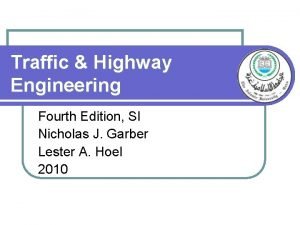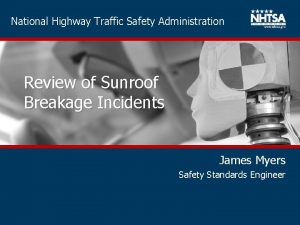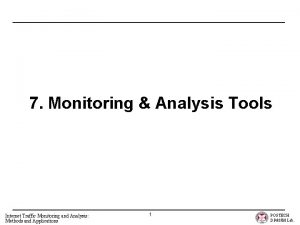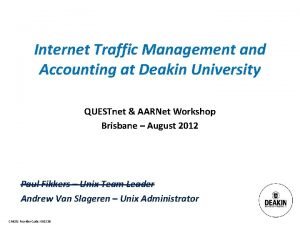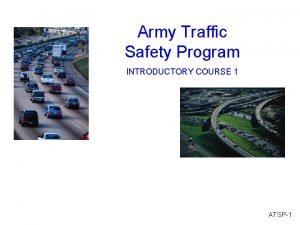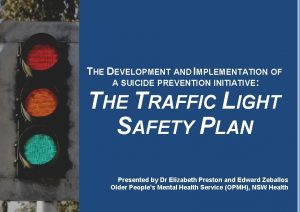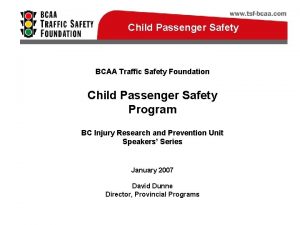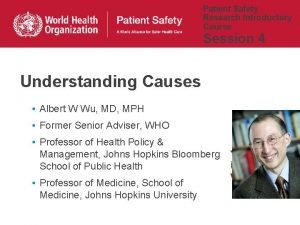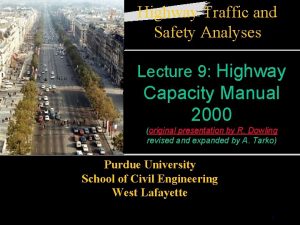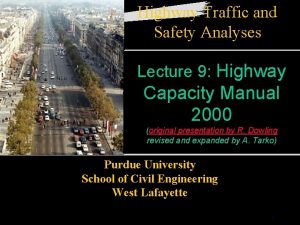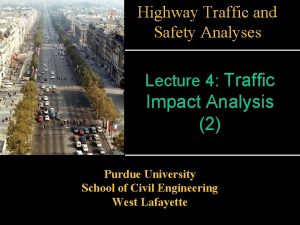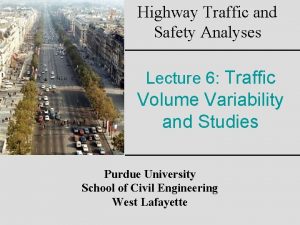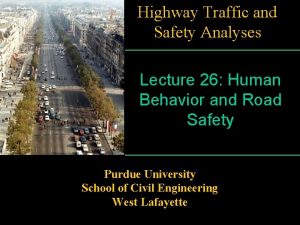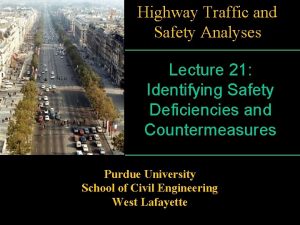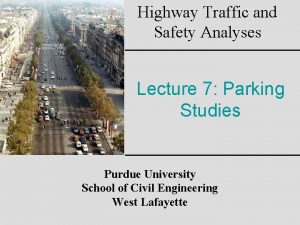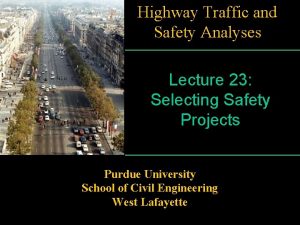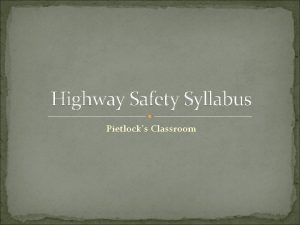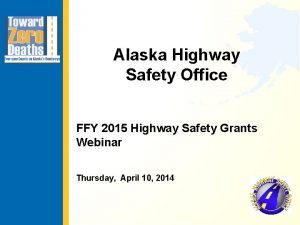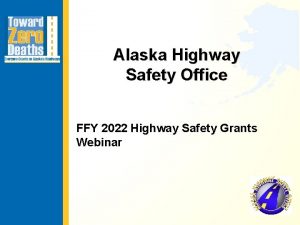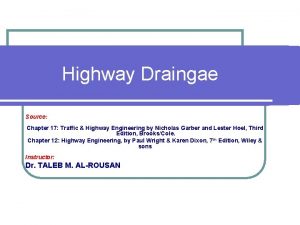Highway Traffic and Safety Analyses Lecture 27 Internet















- Slides: 15

Highway Traffic and Safety Analyses Lecture 27: Internet. Supported Evaluation of Highway Safety Purdue University School of Civil Engineering West Lafayette

Presentation Outline • • • Research Goals Website Design Data Collection Survey Tool Evaluation of Safety Information Conclusions

Research Goals • Develop a prototype website to obtain motorist feedback about hazardous locations • Investigate the relationship between driver perception and highway safety

Website Design

Website Design

Data Collection

Data Collection • 146 responses • Almost all were complete (non-blank) • 95 intersections

Evaluation of Survey Tool • User feedback • Common complaints – Map outdated – More options desired

Motorist Concerns

Sources of Motorist Concern

Top Reported Locations

Can Motorists Point Out Hazard? Evidence

Effectiveness of Detecting Hazard

Evaluation of Safety Information • Gender and Age Effects – No significant difference between male and female respondents – Efficiency Rate tends to increase as respondent age increases

Conclusions • Much safety information to be gained through the survey • Locations indicated by motorists tend to be more hazardous than those not indicated • Gender and age of respondents have no significant effects • Considering only responses that include first-hand information is justified • Motorist feedback is a good supplement to crash data • Tarko, A. and B. De. Salle, Perception-base road hazard identification with Internet support, Applied Health Economics and Health Policy, Open Mind Journals, Vol. 2, No. 4, 2003, pp. 191 -200.
 Traffic and highway engineering 4th edition
Traffic and highway engineering 4th edition Critical thinking in nursing practice
Critical thinking in nursing practice Molecular ecological network analyses
Molecular ecological network analyses What is a rhetorical analysis
What is a rhetorical analysis Courtage analyses services
Courtage analyses services Incomina
Incomina All traffic solutions
All traffic solutions National highway safety administration reviews
National highway safety administration reviews 01:640:244 lecture notes - lecture 15: plat, idah, farad
01:640:244 lecture notes - lecture 15: plat, idah, farad Internet traffic tool
Internet traffic tool Internet traffic management
Internet traffic management Army traffic safety training program
Army traffic safety training program Traffic light safety plan mental health
Traffic light safety plan mental health Brekford traffic safety
Brekford traffic safety Bcaa traffic safety foundation
Bcaa traffic safety foundation Army traffic safety introductory course
Army traffic safety introductory course
